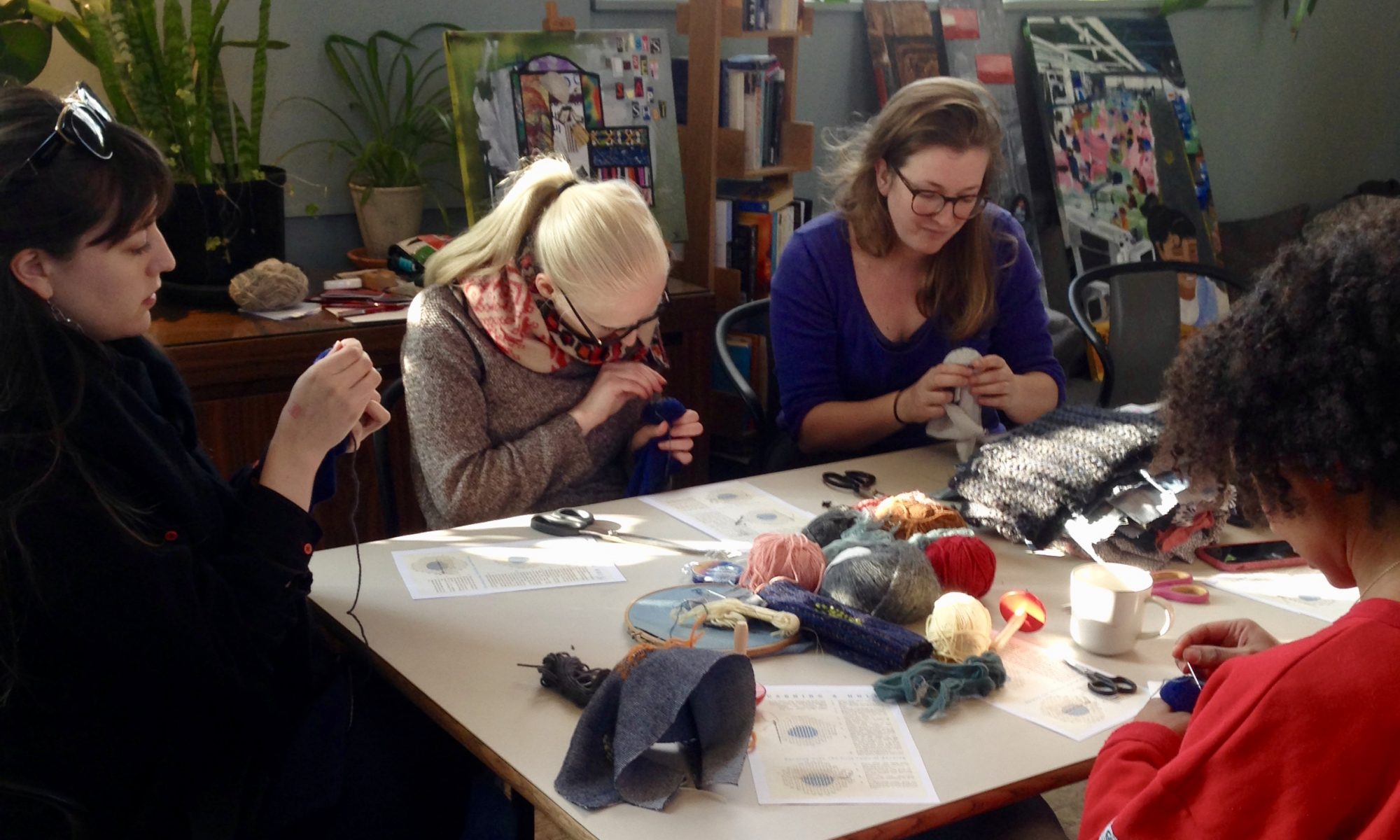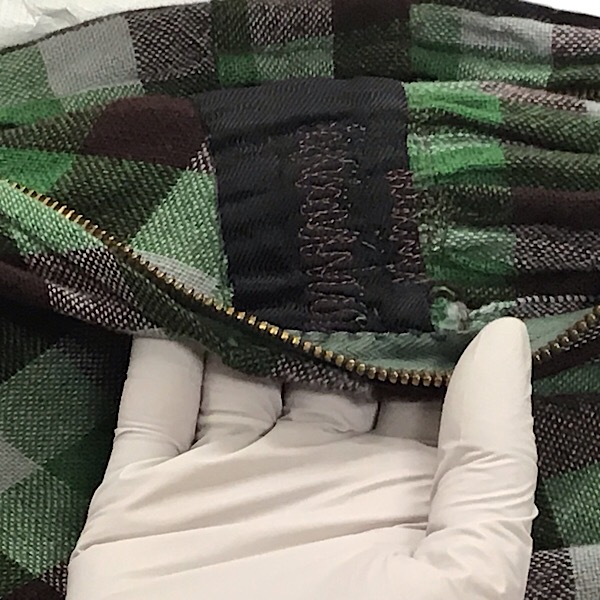‘Make-Do And Mend’ is a well known saying but where does it come from? We visited the fashion archives at the Museum of London to find out more…
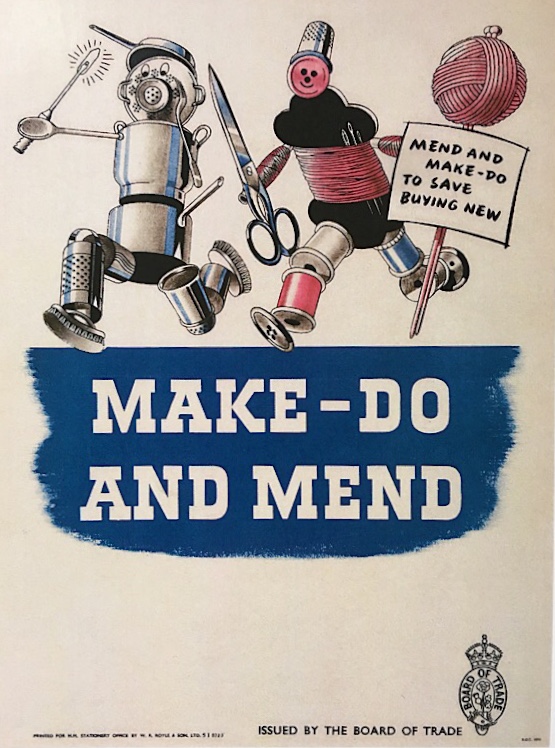
Beneath the hum of the traffic on London Wall, the fashion archives of the Museum of London sprawl in identical stacked rows. There are over twenty four thousand items all neatly packed in acid free boxes; Hundreds of pairs of gloves carefully placed in draws, umbrellas and parasols. The belt of Princess Margaret’s Dior dress as featured in the recent Dior exhibition at the V&A and a cravat worn by Charles Dickens.

Turn a corner and we are amongst rows and racks of clothing each covered in a white protective jacket. They look like a line of soldiers with a paper label in place of a medal.
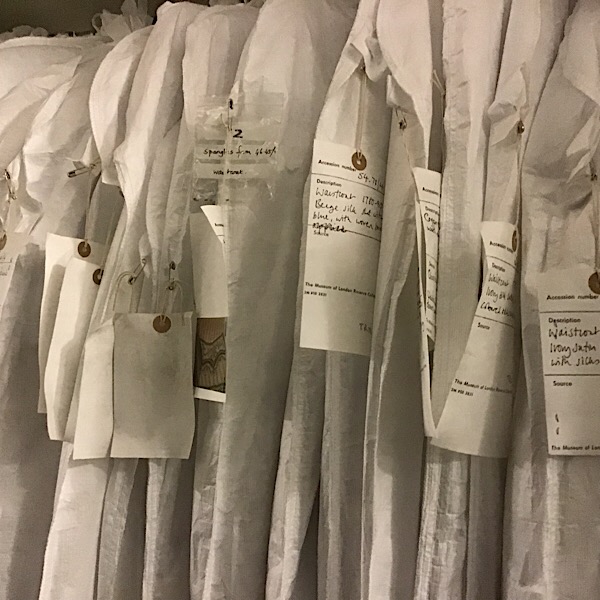
So where did the phrase ‘Make-Do And Mend’ come from? It was part of a campaign launched by the British Government in 1942, during World War II when clothes were rationed and in short supply. The successful campaign encouraged British residents to preserve their clothes providing leaflets and lessons such as how to darn socks and jumpers or patching jacket elbows. This spawned a wave of ingenuity and instead of giving up on fashion, people came up with new ideas in which to show off their individuality.
However, the mending of clothes pre-dates World War II by many centuries. Hidden amongst the twenty four thousand items are evidence that ‘mending wasn’t only for times of austerity or for the non-elite, everyone did it’ says Dr Lucie Whitmore, Fashion Curator at the Museum of London. Eleanor is given a magnifying glass to inspect the mending on a riding jacket. Dated from the late 18th century, the item is rare as it is a woman’s jacket. Usually sportswear items from this era are menswear. Intricate tiny stitches cover a worn section of the silk cuff and add to the elegance of the jacket.
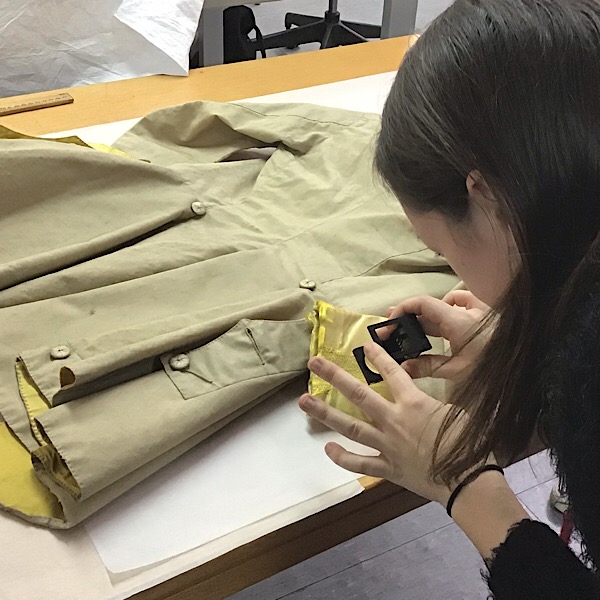
At Fast Fashion Therapy, we encourage the mending of clothes preventing them from being thrown away. But in 2020, we have very different reasons for prolonging the life of clothes. Rather than being scarce, there are more clothes being produced than ever before. In fact, by 2030 global clothing consumption is expected to rise to 102 million tonnes according to Lauren Bravo’s book How to Break Up with Fast Fashion. Mark Sumner, Lecturer of Sustainability at Leeds University estimates ’30 to 40 billion pounds worth of clothing are wasted in the UK’ (Speaking at last year’s Fashion Revolution Question Time at the V&A).
We are working with the Museum of London to host a mending workshop. During the morning, attendees are given exclusive access to the museum’s fashion archives. Dr Lucie Whitmore has hand picked items from the archive to demonstrate mending across three centuries. During the afternoon, we will take inspiration from the items shown and teach you how to mend your own clothes using similar techniques. Learn how to darn a favourite jumper, t-shirt or shirt. Patch your best jeans, a dress or trousers. Bring along an item of clothing you would like to repair (using hand sewing techniques) or we will have samples for you to practice on.
“If the most sustainable item of clothing is the one we already own, then appreciating and wearing those clothes is one of the most powerful differences we can make.”
Lauren Bravo, How to Break Up with Fast Fashion
It is clear from visiting the Museum of London’s Fashion archives that our ancestors cared for their clothes, treating them with the respect they deserved. We hope you will join us at our clothes mending workshop to mend and appreciate your own clothes.
WORKSHOP DETAILS: London’s wardrobe: repair and refashion with Fast Fashion Therapy
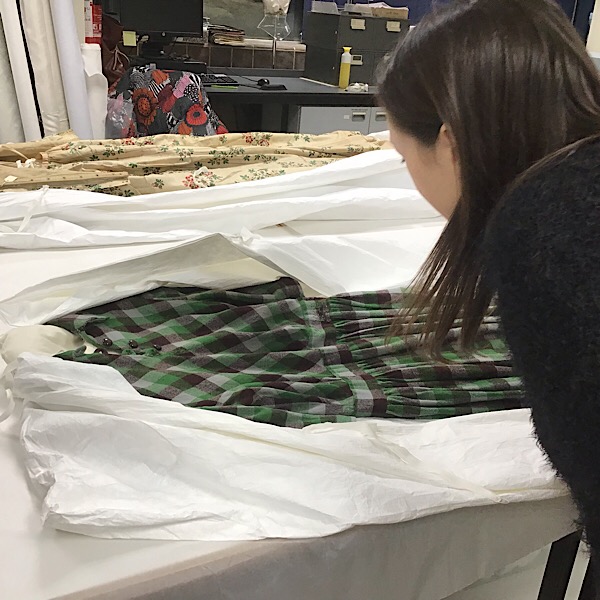
Join the Curator of Fashion at The Museum of London along with Fast Fashion Therapy for a day of repairing and refashioning some of your key wardrobe pieces. We will start the day with an exclusive behind the scenes visit to the museum’s Dress and Textile Store. Here, our curators will select key pieces from our collection to show you three centuries of mended clothing, and tell you some of the fascinating stories behind the objects. After, we will teach some basic techniques to help you start repairing and keep your clothes lasting longer. This hands on workshop will take you through simple darning techniques for fixing holes in knitwear and visible mending such as patching inspired by the Japanese art of ‘Boro’. All materials and kit will be provided for you to learn the techniques of darning and Boro patching. Feel free to bring one damaged item of clothing to repair in the workshop, but this is not essential.
15th February 2020, 11am to 4pm. Cost £65
